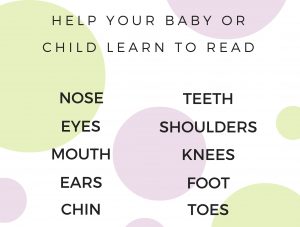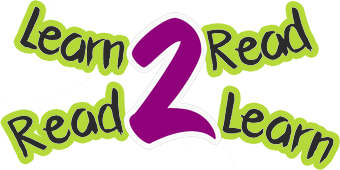My Experiences Teaching a Child 2 Read
When my eldest daughter began kindergarten, her reading skills were immediately assessed. She entered kindergarten reading fluently at a fourth-grade reading level with very high comprehension. Thanks to an early introduction to reading and the “ work at your own pace “ style of homeschooling, she was immediately skipped to the first-grade curriculum. Today, although she is still one full school year ahead and is in a class with children who are a year older than her, she is still a leading performer in her gifted and talented language arts class. I would like to think it all has to do with my superior genes, but I know it is mostly because of the early introduction and the daily leg work required to keep it going.
Initially, I knew very little about teaching a child to read. No, seriously… I had never even thought about teaching someone to read, much less actually doing it. I simply knew I didn’t want my child to miss out on any developmental opportunities. Then I saw videos online of three-year-olds reading books, and I was just in disbelief. A whole two years before even entering school? How could that be? These must be some super smart babies that were raised in a baby boarding school by retired baby development specialist—right?
But no, I assure you that this is real. You, as the learning coach, do not need an Einstein level IQ, nor do you have to have a baby genius or devote all your spare time to doing this. If you don’t know much about early literacy, and you’ve never taught anyone to read before, then you are just where I was when I began. All you really need is a strong desire to want the best for your loved one, a thirty-minute routine twice a day, and the fortitude to stick to it.
Over the past seven years, I have introduced early literacy to each of my four children with outstanding results.
Despite my initial skepticism, I found abundant research that supports early literacy, and teaching a baby to read is much simpler than you think. Step one is simply to recognize how amazing a baby’s brain actually is. Every person has a once in a lifetime natural window of opportunity for learning language with less effort. That window opens at birth and begins to close once a child turns four. Brain development is roughly 90% complete by age five. So, as a loved one of a baby or toddler, this is by far some of the most important information you should know. During this time, it is much easier for a child to learn important language skills naturally by just hearing the language spoken.
Allow me to elaborate, using learning a second language in high school as an example. When I took Español 101, it was very difficult for me to even visualize myself being fluent in Spanish. At that point in my development, my window for learning language had naturally long since closed and, therefore, it was very difficult to understand and to learn the complexities of a second language. I had to memorize words, phrases, and verbs, how to conjugate these verbs, as well as a bunch of rules that applied only to Spanish. Now, I want you to think about how we are born with practically no language skills, yet we learn the language that is spoken around us very naturally without ever being taught by a professor or reading a single line of text from a textbook. Babies don’t know what a verb is, much less what it means to conjugate it. Yet by the age of three, we amass hundreds of words in our vocabularies, which we properly use. To me, that is simply amazing.
Step two is recognizing that you are your baby’s first and most important teacher. This is especially true because at birth, brain development is roughly 25% complete. By the age of two, development is about 75% complete. That right there, my friend, is the fastest period of brain development, making the first two years very valuable and irreplaceable with regard to their lifelong potential. These early years are absolutely critical and should not be overlooked.
A report titled “Lighting Up Young Brains” written in cooperation with the Institute of Child Health at University College London, refers to the preschool years as a “critical opportunity” for key abilities development. Among 1,000 parents interviewed in relation to this research, 47% said they expected their child to know 100 words by the age of three. Unfortunately, that is only half of the recommended number of 200 words for that age. But fortunately, if you take advantage of your child’s window of opportunity for learning language naturally, 200 words would only be about half the words they would know by age three.
It is imperative that you interact with your baby as much as you possibly can during this window. During the first months of your loved one’s life, you should use very simple language, reusing the same words frequently. More particularly, point out and name things that have your baby’s attention. For example, if your baby is trying their best to get the basketball, this would be an ideal time to say, “Basketball” while showing them the basketball. Then say, “I can bounce the basketball” while you display dribbling the basketball.
During this time, the child is naturally learning the patterns of language, such as proper grammar and sentence structure, without even trying too hard. Even though it may seem like the baby doesn’t understand you because they may not respond how one would typically respond, the benefit from your child hearing the language used properly and often during this window is unquantifiable. The time and energy invested during this window will pay out a thousand fold not only in your child’s life, but will lead to a more stress-free life for you as a parent.
When I was using these techniques with my children, and they entered the room where the materials were stored, they would reach for the books saying, “Book! book!” They stretched up toward these materials on the high bookshelf, which, by the way, were purposely placed out their reach. They looked at this learning time as fun and tantalizing. They loved doing it.
When a child is exposed to early literacy and is taught how to learn, learning is perceived as fun and not as work. When a child is not exposed to early literacy and taught how to learn, “doing school work type activities” becomes something that is dreaded and avoided as often as possible. Let’s not even begin to talk about that child having to read in front of their class. The thought of that alone becomes very terrifying and something they try their best to avoid at all costs.
The evidence shows that the earlier a child learns to read, the better the child reads and the more likely they will enjoy reading. A study showed that early readers tend to maintain an advantage over children who weren’t taught to read early on (Durkin, D 1977). This is a quote directly from the study: “These children not only could read, but they did read. They were avid readers and had a greater exposure to print. Those who learn to read later in childhood frustratedly struggle to acquire reading skills and ultimately learn at lower levels for their entire lives because of it.” That gap that exists in the beginning between the children who are exposed to early literacy versus those who are not only grows larger over time.
So, again, talk about any and everything. Point to and name things that have the baby’s attention. They will learn the names of objects much quicker this way. You can also take this opportunity to talk positive things into existence in the life of your loved one. Tell them how smart they are and how great they’re going to be; they absolutely love that!
Step Three… Introduce one word at a time.

This is reading with the focus on the words rather than just the story and the pictures. When you read traditional children books to a child, you are reinforcing words that are already in their word bank, as well as modeling the proper use of those words. But when you focus on teaching individual words, your child not only learns new words, but they are introduced to the written word simultaneously. This is paramount: instead of one learning the written language as a separate task by waiting until the window begins to close at age four or five, we should teach the written aspect simultaneously while the child is naturally learning to speak and comprehend the language. By combining the two while the baby’s brain is specifically wired for this task and they are naturally learning to speak the language, the child should learn to read as naturally as they learn to speak.
Don’t worry about your loved one not verbally expressing that they know the words early on. When a child is learning to speak, they have very little control of their brand-new face. They are figuring out how to control their tongue and mouth muscles, which are necessary for speaking. Because of that, there is approximately a six-month gap between when the child learns new words and when they begin to say those new words.
Step Four… Falling into a routine during this time is also key. Just as with all other perishable skills, if you don’t use it, you’ll lose it. Repetition is king! You should introduce a group of approximately ten to fifteen words at a time by showing them the word first, then pointing out that every word is read from left to right, followed by a picture of what that word represents with supporting rhetoric. One of the world’s leading language teaching programs utilizes this same teaching method. They’ll show you a word, then a picture of that word. I don’t believe that is a coincidence.
You should go through that group of words twice a day for a month at minimum. Incorporating a homemade video showing what these words are will increase their repetitions, which will increase their comprehension and recognition. Remember, it is imperative to continue with the scheduled exercises even though your child may not show that they are comprehending. Be patient and remember to enjoy this one-on-one quality time with your loved one. This and every other developmental exercise should always be in a low pressure and fun environment because providing a child with a loving, close, and strong relationship is just as important as taking advantage of the window of opportunity.
Before moving on to the next set of words, I suggest reviewing the previous set of words. For example, before moving on to the third set of words, do a quick review of the first set of words. I have found that this helps with retention. I have also found that after your loved one has successfully learned sixty or so new words, they begin to learn new words at a much faster rate. That is because they have successfully learned how to learn new words. They now know that these words, which they are learning naturally through merely hearing the language, all have corresponding written forms. They will begin to pick up words from other sources such as signs when you are driving, but also from music and conversations that may not be meant for the child’s consumption. So, be especially careful about inappropriate language around your loved one while they are in their language learning window.
The window of opportunity for learning language closes gradually, meaning that children who are five and six years of age, and therefore closer to the end of the window, can still learn new words rapidly and can greatly benefit from hearing and learning new words. So, if your loved one is closer to the end of the window, I whole heartedly recommend that you still do everything within your power to maximize their development. For those of you who are closer to the beginning of the window and would like to maximize your loved ones’ life potential… then start early and stay consistent. Remembering all the while that all of these developmental exercises are perceived as fun and games by children. So, enjoy this bonding time, keep it fun, stay consistent and be amazed by the capabilities of a baby’s brain.
FREE RESOURCES

Valedictorian Certificate

10 Words to Learn
Providing parents and teachers with
the best resources to teach reading skills
